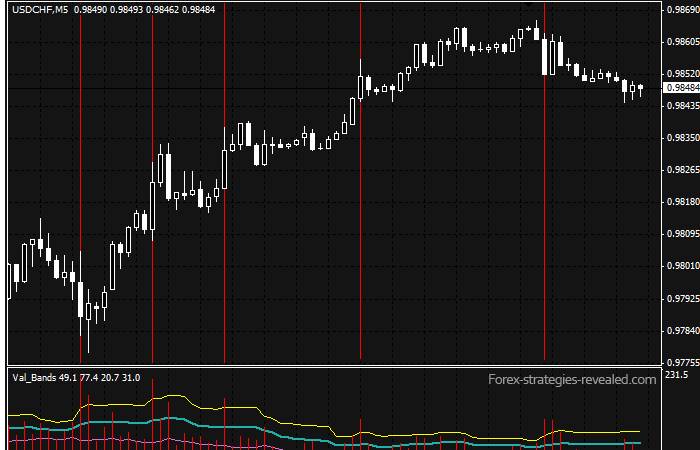What is a Profit Target? – In economic trading, the profit target is how you measure the profit adequately. In other words, when you enter the trade, it is the point you select to exit the business if it is profitable. Your profit target regulates how much money you intend to make in trading. The profit target is essential to order management as it helps you stay committed to your trading goals. If previously set up as a trading order, it will automatically close your trades even if you are not watching your trading screen when the target is set—reached.
Table of Contents
What is a Profit Target?
The profit target, also known as Take Profit, is the predetermined point at which a trader wants to exit his profitable trade for the amount of expected profit. It is the level at which profit is sufficient for the risk taken.
Usually, when you place your trade order, you set the price at which you will close your trade when you make a profit. It is the price level you choose to exit the business if it is profitable and known as the profit target. Your profit target determines how much money you intend to make in trading. It is essential to order management as it helps you stay committed to your trading goals.
You can set your profit target as a reverse order (sell limit or buy limit order, depending on your trade type) at the level you choose when making your trade entry, but some traders set the class and close their trades manually. Price reaches that level. If your profit target is a preset trading order, it will automatically close your trades when the target comes, even if you don’t watch your trading screen.
How Does the Profit Target Work?
The profit target order aims to exit a trading position, a trading order opposite to the trading order placed in the market. For example, a profit target order for an extended part is a sell order, while an order for a short post is a buy order. Therefore, a Take Profit order works with an opposite charge to keep you in a neutral market position.
Captivatingly, the target profit order is a limit order, meaning that when the market reaches a prearranged price level, we can accomplish the charge at that price or better. It is in contrast to a stop order, which becomes a market order directed at the best possible price when the price level is touched.
Traders have different ways of using profit targets. Some execute the order manually when the market reaches its desired levels, while others present their buy and sell orders when they enter. Whichever method the trader chooses, trades are left as soon as the market reaches the expected level to ensure the profit made.
So, the profit target tells the trader how much he can earn if everything goes as planned. It guides the trader to know how much reward he will get from his toil.
Why Should You Set a Profit Target?
Profit targets are an essential part of trade management, which is vital in risk management. Without timely profit-taking, it would be nearly impossible for a trader to be profitable because it acts as a guide for the reward/risk trade-off.
The market does not move in one direction forever. It can be in the wrong way up at any time. Using a profit target allows the trader to avoid the possibility of a profitable trade turning into a loser. Therefore, using the profit target strategy can help the trader make a profit and prevent any loss when the market changes direction.
So, you might think that a profit target will continuously limit the potential profit of a trade. It offers characteristic security because it safeguards you don’t hold the position for too long; it only lets you see your current profit disappear before closing your trade.
Using a profit target may seem to contradict the old saying in trading: “Let your profits flow.” But this is not true; The profit target ensures you gain enough advantage for your risk. While preventing you from allowing a winning trade to turn into a loss. Therefore, you must accept that you cannot exhaust all the profits in a business and be prepared to take the profits you deserve. If the market continues to move after you exit your position, you don’t have to regret it.
Because markets do not move unilaterally and fluctuate, profit creation in each segment can be lost as quickly as it was complete. Experience in the financial markets shows that paper profits are not real profits until the deal is closed. That is why many experienced traders use profit targets.
Different Ways to Set a Profit Target
There are different ways traders set profit targets when trading. These are some of them:
Use the Risk/Reward Ratio

Some traders set a profit target as a percentage of the risk they take on trading. All factors being equal, risk refers to the size of the stop loss. Therefore, they set the profit target in multiples of the stop loss. The multiplier factor a trader uses depends on the quality of the trading signal and the expected price action.
The most common practice is to use 2x or 3x the stop loss size. However, some use 1x or 1.5x the stop loss size, while others use 10x the stop loss size.
Using ATR
ATR (Average True Range) is a volatility indicator that measures the price action range over time. Most commonly, traders use the 20-period ATR to gauge market volatility. They use it to predict where to place their stop loss safely.
While traders mostly use ATR to predict stop loss placements, some traders also use it to predict profit targets. For this purpose, traders tend to use multiples of the 20-day ATR. Therefore, a swing trader who trades on a daily timeframe may decide to set his profit target as 2x 20-day ATR.
Use the market structure
Many traders use some form of market structure or technical analysis tool to decipher a good profit target position. While there are numerous ways to do this, let’s consider the following:
Support/Resistance Levels
Depending on the situation, it is common to find traders who place stop-loss orders. After a nearby support or resistance level. Likewise, traders place their profit targets just before a support or resistance level to exit their positions before the market reverses.
The profit target is placed below the resistance level for a long position. So the situation is closed before the price reverses the downside. Similarly, when selling, traders place their profit targets just above the support level. They do it to exit the position before the market changes to the upside.
Fibonacci Extension Levels
Most trading platforms include Fibonacci tools. The Fibonacci retracement tool shows where a retracement could go before a retracement, but the other end can be lengthy to show where the next price wave might reach. Some traders use these extension levels, specifically 123.6%, 138.2%, 161.8% and 261.8%, to predict profit targets.
Unlike the retracement tool, the Fibonacci extension tool only predicts . It predicts where the price impulse wave might reach before starting a new retracement or reversal. Therefore, expansion levels are normal levels for setting a profit target
Expected Price Levels Based on Chart Patterns
There are different types of chart patterns that you can find in the market. Examples include head and shoulders or reverse patterns, double top/bottom patterns, ascending and descending wedges, triangles, rectangles, flags and pennants. Traditionally, these models can predict a potential profit target when trading.
For example, the profit target for the head and shoulders model is the height of the head measured from the neckline. This increase often falls to the other side of the neckline for a profit target. Strategy Signals
Some traders use their trading strategies to determine the profit target. This can happen when the process signals an exit or a particular market event. It tells the trader it is time to close his position.
For example, when using a 200-day moving average to create an average retracement strategy, a trader may decide to exit his position when the price crosses the moving middle line. Similarly, when we use the 20-day high/low for trading the average correction, the exit signal can be when the market makes a new 20-day low/high.
Use System Flow Signals
Prominent players such as banks and institutions often leverage order flow to position their profit targets. Here’s why: Institutional traders can often access the Level 2 market to see how many orders are at each price level. Since they usually have substantial charges, they need to target a price level with enough counter orders to fulfil their position.
Using a Sound Profile
As with order flow, some significant players use the volume profile. It is to determine where to exit when they are in a profitable position. The Volume Profile is a charting technique that predicts the trading volume at each price level. The longer the book rises at a certain level, the more likely the story will act as support/resistance.
Conclusion
What is a Profit Target? – The profit target is a predetermined price point at which the investor exits the trade for positive gains. Profit targets share many trading plans that savers and technical traders use to achieve risk. The target can be loyal using one of several approaches or criteria.


